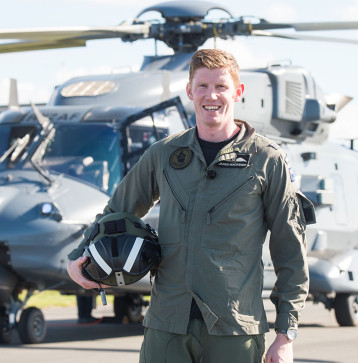
Air Warfare Officer
Skip to section:
About the role Career progression and training Salary and benefits Entry requirementsAboard the long-range surveillance P-8A Poseidon aircraft, you will learn to operate and manage the complex hi-tech systems used to conduct a wide variety of missions including anti-submarine warfare, resource protection and search and rescue.
- ServiceAir Force
- SpecialisationAviation
- LocationVaried
-
Starting Trade Training$71,113
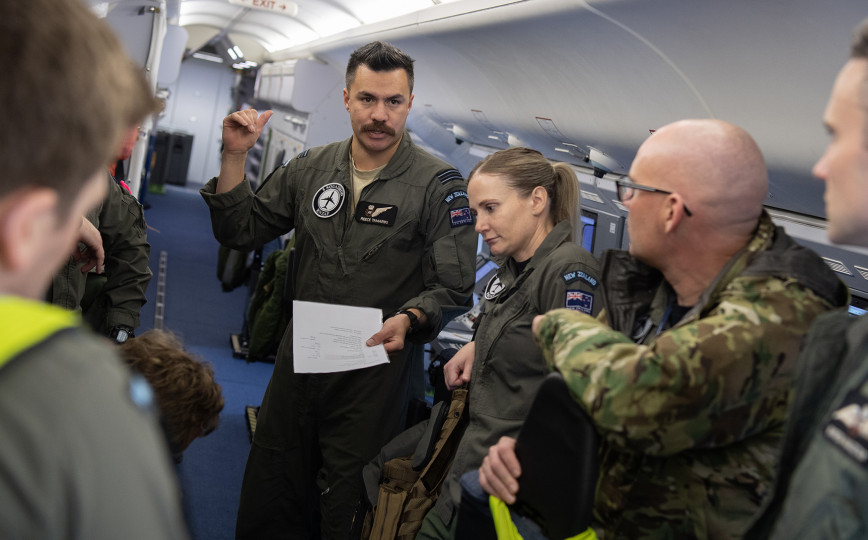
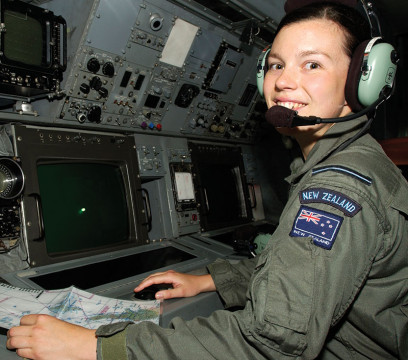
About the role
As an Air Warfare Officer (AWO), you’ll hold a key position flying and operating one of the Air Force’s newest, most capable and technologically advanced aircraft – the P-8A Poseidon of the Airborne Surveillance and Response Force.
On completion of initial and conversion training, you will take your place as a junior Tactical Coordinator (CO-TAC) onboard the P-8A. You will be working alongside the Tactical Coordinator, Sensor Operators and Pilots to manage the range of tactical missions carried out by the aircraft.
This is a challenging and ever-changing role that will take you the length and breadth of the country and to a variety of locations overseas. You will play a pivotal role in a highly capable crew providing the coordination of operational missions.
The P-8A Poseidon aircraft perform a variety of roles including search and rescue, long-range flights, fisheries patrols, anti-submarine warfare, operational tasking, disaster relief and aeromedical evacuation.
Job on base
On board the P-8A you will manage a range of high-tech systems to achieve the aircraft’s operational mission. You will play an integral role when it comes to flight planning for an upcoming mission. Prior to departure you will have planned the mission utilising specialised mission planning software. This will enable you to confirm accurate fuel requirements, payload available, make threat assessments and employ tactics to counter these threats.
Airborne you will be responsible for real-time mission planning, working closely with the Pilots. You will manage all tactical communications including military datalinks, satellite and voice communications, to pass information with other military or government agencies.
Your duties on the P-8A will require you to be alert and adaptable to a dynamic and potentially hostile environment. You could be responsible for relaying time critical targeting information to friendly fighters or warships prior to strikes or reconnaissance on targets of interest. When conducting low level operations the AWO coordinates closely with the pilots and radar operator to ensure the aircraft flight path is safe from hazards such as land, airspace or hostile units.
Job on deployment
Whilst on operations, your job gets even more interesting. For an AWO, flying tactically is both demanding and rewarding. You will be briefed by intelligence specialists prior to the flight and you will plan to use techniques to ensure that the mission is completed safely and expeditiously. You will draw upon your experiences during training and on exercise to overcome time and environmental restrictions in the area of operations.
Your role is to ensure the safety of the aircraft in a busy airborne setting. With an array of sophisticated navigation equipment, you will have the most situational awareness of the aircrew on the plane.
In addition, you will process any new information the crew received inflight and make an informed decision on its impact on the mission. It is because of the dynamic nature of the job and variety of tasks performed, that the role of the AWO is one of the most exciting trades in the Royal New Zealand Air Force (RNZAF).
I chose to join the Air Force because I wanted a challenging and diverse career, and I also wanted to travel.
Career progression and training
Career Progression
Basic Training
Job Training
Ongoing Training
Your role will include military command and leadership duties. And, as your career progresses, you can expect to work as an instructor.
After basic AWO training, you will complete a conversion course onto the type of aircraft that you will be operating on board. As part of the initial segment of Squadron flying you will gain specialist qualifications that will expand your abilities and roles they can be employed in. With time and experience you will soon find yourself being deployed as part of local and international exercises with other Armed Forces; and eventually will conduct military air operations in support of Defence Force global commitments in current areas of operations.
You will reach a stage where you will return to an AWO training organisation and learn the skills required as an instructor. From there you will be able to pass on what you have learnt to students on initial basic AWO training, and then return to Squadron as part of the instructor team. As a senior AWO, you will complete duties of the Squadron executive/management team as well as continuing to mentor other AWO on Squadron.
RNZAF Officer Commissioning Course (ROC)
(26 weeks) Location: RNZAF Base Woodbourne
All individuals selected to become Commissioned Officers in the Royal New Zealand Air Force (RNZAF) are required to complete this course. It is designed to prepare students with the knowledge and experience necessary for commissioned service and the beginning of a career in leadership. This course will cover various subjects including:
- RNZAF Customs and Protocol
- Drill and Parades
- Military Law
- Military Field Skills and Weapons Training
- Defence and Strategic Studies
- Personnel Administration
- Communication Skills
- Command, Leadership and Management
- First Aid
Basic AWO Training
The course is approximately 12 months long covering subjects such as aircraft technical knowledge, navigation systems, military and civilian communications and electronic warfare. The course includes 90-110 hours of flying training.
P-8A Poseidon Conversion Training
Upon graduation of initial AWO training you’ll undergo operational conversion training on the P-8A Poseidon. The skills and knowledge learnt during initial training is utilised to enable outputs and operations in support of New Zealand interests. The P-8A operational conversion course includes Search and Rescue (SAR), Humanitarian Aid and Disaster Relief (HADR) as well as training for and conducting tasking for other government agencies such as New Zealand Customs and the Ministry for Primary Industries (MPI). In addition to this, complex operations such as Anti-Submarine Warfare and Anti-Surface Warfare are introduced and developed. In total the conversion course is 6-8 months and prepares Air Warfare Officers for operations in New Zealand, the South Pacific and globally.
Many of the RNZAF’s most senior officers are AWOs. A career as an AWO will provide you with the tactical and operational experience and knowledge required to climb the ranks and take on leadership roles at the highest level of the organisation. Training and development in command and leadership will be provided throughout your career.
There are two advanced command and leadership training courses at the New Zealand Defence Force Command and Staff College at Trentham Military Camp (Wellington).
Both courses comprise a mixture of visiting lecturers, tutored discussion groups, visits and individual study to give you the skills you need to progress your career.
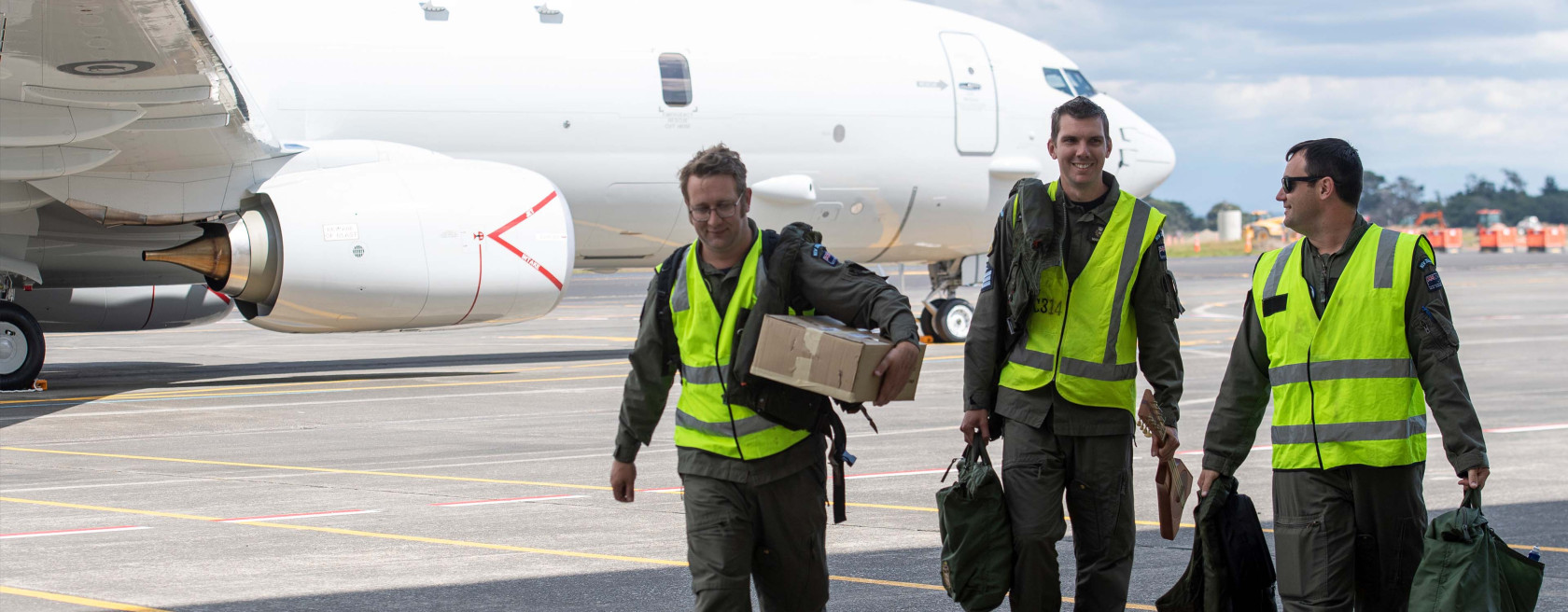
Salary and benefits
Careers in the Air Force are well-rewarded, as well as being diverse and exciting. As you become more experienced and move up through the ranks, gaining additional skills and qualifications, you will see your salary rise accordingly.
$50,597
Under Initial Training
$71,113
Starting Trade Training
$169,941
Future Potential Earnings
Figures updated on July 1st 2023
Military Factor
Earn a competitive salary while training or learning your trade, along with additional allowances for time spent in the field, at sea, overseas, or deployed on operations.
In addition to salary and allowances, other benefits of joining the New Zealand Defence Force include:
Access to your Service marae or tūrangawaewae
Sponsored tertiary study programmes at all levels
Free access to gyms and swimming pools on camp and bases
Opportunities to travel
Free and subsidised medical and dental care
Subsidised food and accommodation on camps and bases
Free and subsidised insurance cover
Help to buy a home and save for retirement
Entry requirements
Basics
Education
Fitness and medical
Citizenship
Period of Service
- You must be at least 17 years of age.
- Meet the citizenship and security requirements to gain TSV security clearance for this trade.
Minimum: NCEA Level 2 certificate.
Find out more about the NCEA levels and certificate requirements
Scholarship Entry: The Air Force offer undergraduate scholarships for candidates who demonstrate the qualities required to become an Air Warfare Officer.
The scholarships are:
- RNZAF Undergraduate Scheme: Study at an approved university institution of your choice while the Air Force covers your fees and a living allowance on a 'year for a year' return of service basis.
- Height restrictions apply.
- You must be medically fit for service.
- Colour perception restrictions may apply.
There are strict citizenship and security requirements to gain the required TSV security clearance for this trade.
Your training is some of the most thorough and advanced in the world. On graduation from the AWO Course, you’ll be contractually obliged to serve another six years in the Air Force. Bear in mind that your role changes every day and you’ll be working in a range of jobs both here and possibly overseas.

Ready to start your Air Force career?
Other jobs you might like
You can also browse jobs by specialisation to narrow down your search.
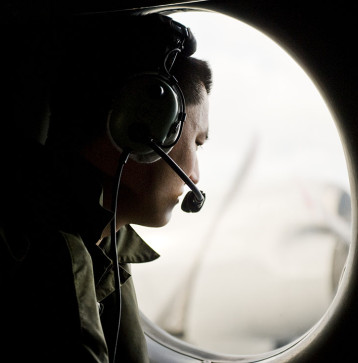
Applications Open
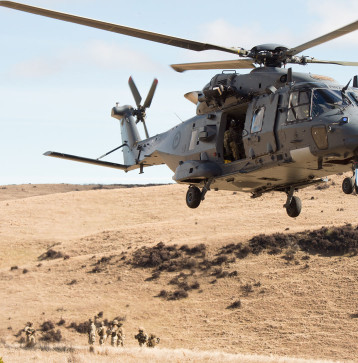
Applications Open

